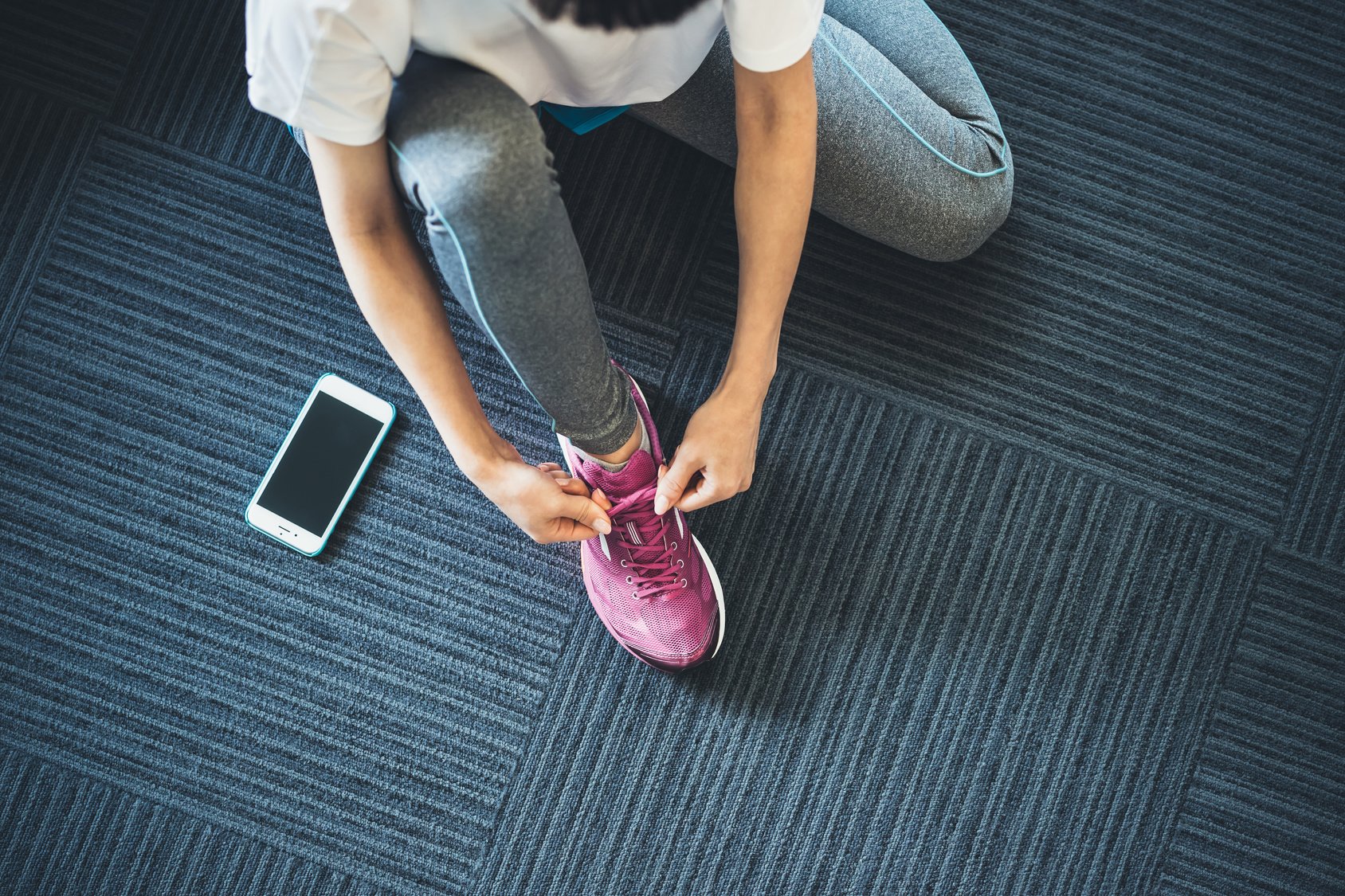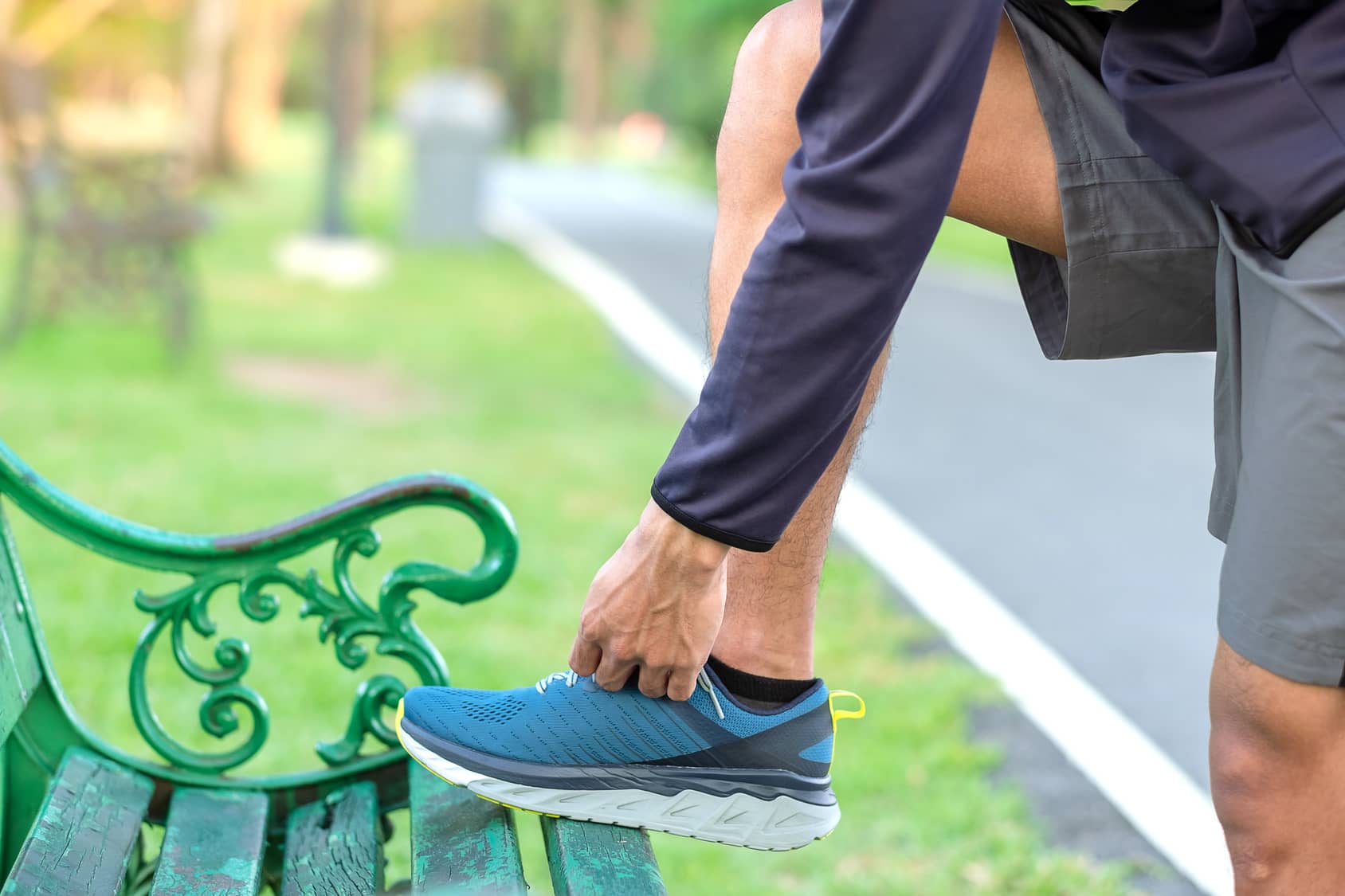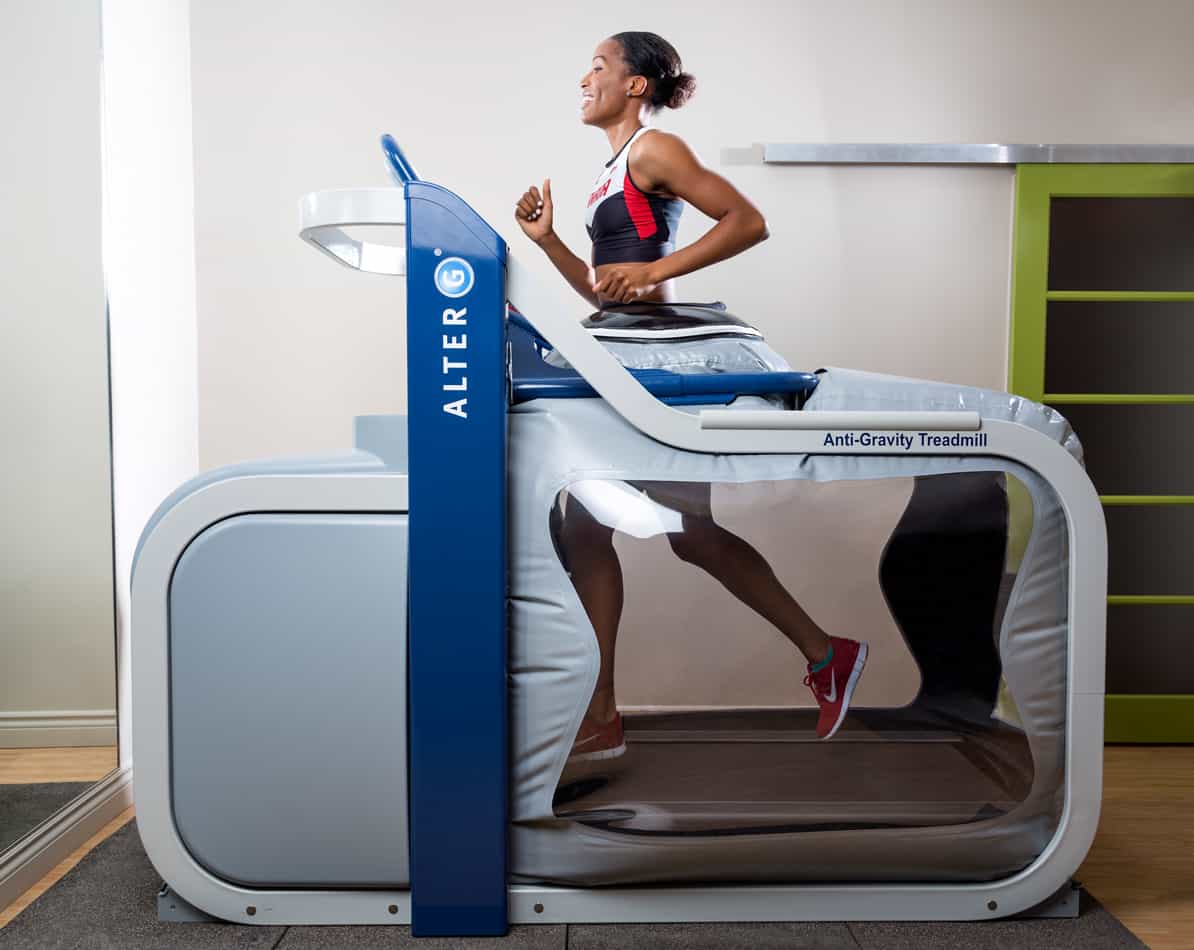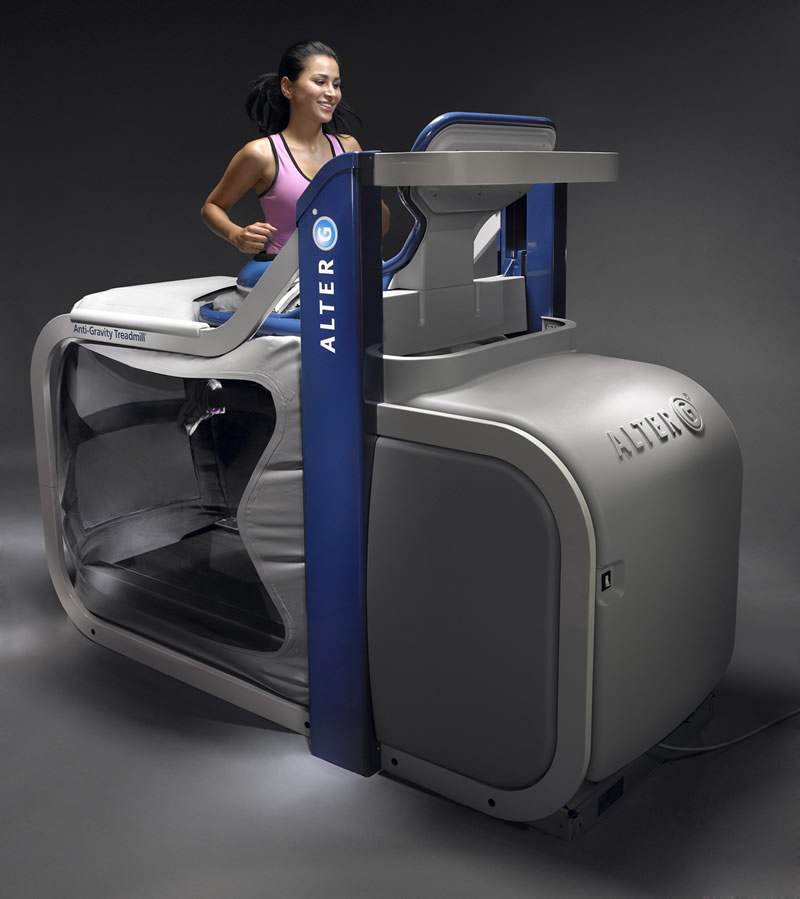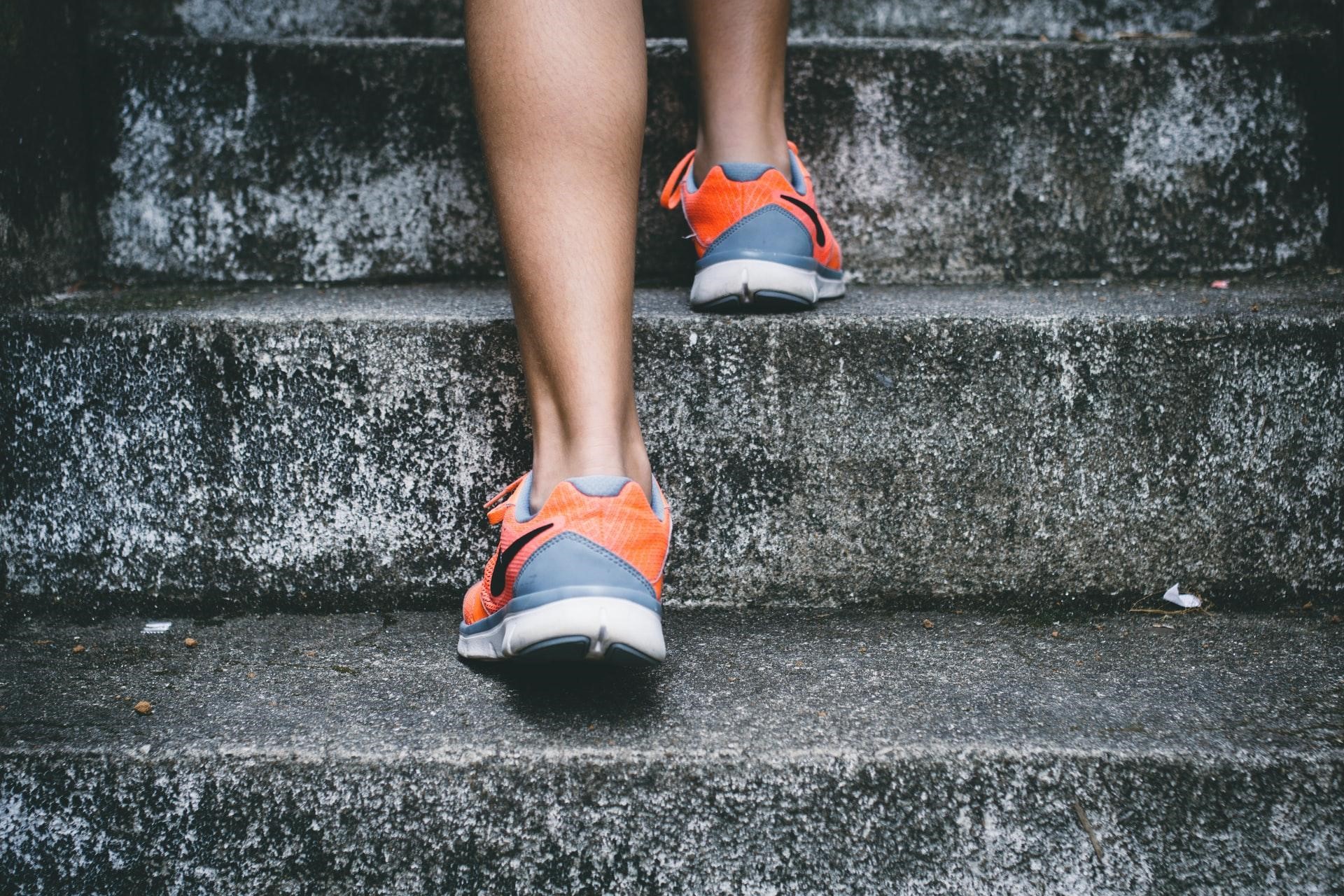How to Start Running at 50: A Beginner’s Guide to Getting Fit After 50
How to Start Running at 50: A Real-Runner’s Guide to Crushing It Later in Life
Can You Start Running at 50? Hell Yes—Here’s Why You Should
Thinking about picking up running at 50? Maybe you’re wondering if it’s “too late,” or if your knees will explode by mile two. Let me stop you right there—you’re not too old, not even close.
I’ve coached folks in their 50s, 60s, and beyond who started from scratch and ended up setting PRs in races they never thought they’d be running. Here’s the deal: age isn’t the barrier—inaction is. You showing up now? That already puts you ahead of half the population sitting on the couch.
As I always tell my runners:
“Starting at 50 doesn’t make you late — it makes you fearless.”
Running doesn’t care if you’re 25 or 55. It rewards consistency, effort, and patience—not birth year.
Older Runners Are Out There Crushing It
Here’s something most people don’t realize: running after 50 is more common than ever. We’re not the exception anymore—we’re the rule.
Check this stat: A study of NYC Marathon finishers from 1980 to 2009 found that over half of male finishers were over 40, and women over 40 made up about 40% of female finishers. That number’s only gone up since then.
Masters runners (that’s you if you’re 40+) are running stronger, longer, and smarter than ever. I’ve had runners start in their 50s and blow past goals they thought were out of reach. It’s not about running like you’re 20—it’s about running like a smart, strong, goal-driven 50-year-old with a purpose.
What’s In It for You: The Real Perks of Running at 50+
Forget midlife crisis—this is midlife power mode. The benefits of running at this stage? Massive:
- Heart health: Running helps your heart pump more efficiently, lowers your blood pressure, and reduces the risk of heart disease.
- Weight management: Burn calories, improve insulin sensitivity, lower diabetes risk. Running’s a fat-burning furnace if paired with halfway decent eating.
- Stronger bones and joints: Running is weight-bearing, which helps build bone density—critical as we age. It also strengthens the muscles and tendons that keep you upright and balanced.
- Mental health & mood: That runner’s high isn’t hype. Running kicks anxiety and depression to the curb, clears your mind, and boosts your confidence. Bonus: it connects you with people. Join a group or chat with other runners and suddenly you’ve got a tribe.
Oh, and it’s not just anecdotal.
One study in Frontiers in Physiology compared folks who started running around age 50 with people who’d been running since they were teenagers. Guess what? No major differences in fitness or body fat. The 50+ starters caught up with lifelong runners.
That means you can get fit, fast, and strong even if you’ve never run a mile in your life—if you train smart.
Real-Life Inspiration: Proof It’s Never Too Late
Still think this is a young person’s game? Let’s talk about Roy Englert, who didn’t even lace up his first pair of running shoes until his 60s. At 96, he broke the 5K world record for his age group with a 42:30 finish. Insane, right?
Then there’s the guy who signed up for the Marathon des Sables in his 50s—the brutal six-day ultra in the Sahara Desert. By 57, he was running 50K trail races like they were weekend fun runs. His 5K times? Faster than guys half his age.
Running doesn’t belong to the young—it belongs to the willing.
So if you’re thinking, “I’m 50, maybe I’ve missed the boat,” let me tell you: your best running years might still be ahead of you.
Mindset Shifts: The Real Game-Changer for Runners Over 50
Running at 50 isn’t just about your body—it’s about your brain. Here’s how to think like a seasoned, smart runner right from day one.
1. Progress Will Be Slower — And That’s Fine
Let’s be honest—you probably won’t be dropping minutes off your pace every week like a 25-year-old newbie. But who cares?
Slower doesn’t mean you’re failing. It means you’re adapting smart. Endurance takes longer to build as we age—something that might’ve taken 8 weeks at 30 could take 16–20 weeks now. That’s just how the game works. Doesn’t mean the progress won’t come.
One runner I worked with started at 52. Took him almost two years to work up to a 50-mile week. But he did it injury-free and feeling strong because he didn’t rush it.
Celebrate the small wins. Got through a 20-minute jog without stopping? Victory. Added 5 minutes to your long run? Win. Ran three days this week instead of two? Progress.
And forget pace guilt. Running a 13-minute mile at 53? You’re still lapping everyone on the couch. There’s no shame in going slow—only in giving up before you even start.
Here’s your full rewrite of sections 2–4, in David Dack’s gritty, motivating, coach-style voice—while preserving all key facts, scientific references, and real-world examples. It’s conversational, raw, and full of real-runner wisdom:
2. Recovery Is Your Superpower Now
Back in your 20s or 30s, you could probably get away with back-to-back hard workouts, crappy sleep, and still lace up strong the next day. But now? In your 50s and beyond, recovery isn’t optional—it’s the name of the game.
Your body’s not broken—it’s just different. The engine still runs, but the pit stops matter more. Blood flow slows down a bit. Muscle repair takes longer. Your inflammatory response isn’t firing like it used to. That means you’ve gotta give your body time to rebuild after you break it down. That’s when the magic happens—on the rest days, not just the running days.
📌 One study even found older runners are more likely to deal with nagging issues in the hamstrings, calves, and Achilles tendons. Why? Because the repairs take longer. Ignore recovery, and you’re flirting with injury.
Here’s what I tell most 50+ runners: start with 3–4 runs a week max. Sprinkle in rest or cross-training between those runs. You’ll probably feel better running every other day than trying to go daily. And if you’re feeling good? Try the “hard/easy/easy” cycle: one tough run, followed by two chill ones. That extra breathing room makes your next hard run feel doable—even strong.
And don’t mess around with sleep. 7–9 hours a night should be non-negotiable. That’s when your body repairs tissue, balances hormones, and resets the whole system. Even a 20-minute power nap on tired days can move the needle.
Oh—and hydrate. And eat real food. After a run, get some protein in you. Your muscles will thank you later.
Let me be clear: resting isn’t weakness—it’s smart. You’re not slacking off by skipping a run. You’re investing in the next one. As I always say, “At this age, recovery isn’t an accessory—it’s part of the damn plan.”
Stay sharp, play the long game, and you’ll keep running into your 60s, 70s, and beyond.
3. Walking Is Not a Weakness — It’s a Tool
Let’s squash this nonsense right now: walking isn’t quitting. It’s strategy.
Too many new runners (especially older ones) feel weird about taking walk breaks. Like they’re not really runners if they’re not going nonstop. That’s garbage. Walking is one of the smartest tools you’ve got—especially if you’re just getting back into the game.
Here’s the deal: run-walk intervals build endurance without frying your joints or pushing your heart rate through the roof. They help you ease into running while keeping your effort in check. It’s not cheating—it’s sustainable.
🏃♂️💨 Science and coaching back this up. The run-walk method is a go-to for beginners because too much running too soon is a fast track to injury. But mixing in walking gives your body a chance to adapt. Knees, feet, and Achilles get a break. Your lungs can catch up. But guess what? You’re still improving.
Real-world win: I coached a 57-year-old woman who started running at age 50. Her secret sauce? She walked 3+ hours a week before even jogging. Then she eased into a Couch-to-5K run/walk program. Seven years later, she’s still running. Still healthy. Still loving it. All because she didn’t rush it.
Here’s how to use walk breaks like a pro:
- Use them during warmups and cooldowns.
- Take 1–2 minute walks when you’re out of breath.
- Use the “talk test”—if you can’t speak comfortably, back off and walk.
The goal at this stage isn’t to break records—it’s to build the engine, safely. Plenty of veteran marathoners take walk breaks. Doesn’t make them less of a runner. It makes them smart.
So give yourself permission. You’re still a runner. You’re training in a way that will keep you running longer. And that’s what matters most.
4. Your Wins Will Look Different—And That’s a Good Thing
You might’ve been a speed demon in your youth. Maybe you chased PRs, won races, or just crushed workouts on zero sleep. But if you’re starting (or restarting) running in your 50s? Your wins are gonna look different now—and that’s not just okay, it’s beautiful.
Winning now isn’t about medals or fast splits. It’s about showing up. Staying healthy. Building a routine you can stick with.
Heck, getting out the door 3 times a week is a big deal when you’ve got a full-time job, kids, a creaky knee, and maybe some doubts in your head. So when you do it? Celebrate that. That’s a win.
🎯 Maybe it’s finishing an 8-week beginner program.
🎯 Maybe it’s jogging a full mile without walking.
🎯 Maybe it’s just feeling better in your body after a few months of consistency.
Stop comparing yourself to your college self—or worse, to strangers on Strava. I’ve coached guys who used to crank 6-minute miles in their 20s… and now struggle to hit 12s in their 50s. That’s reality. But that same guy? He’s still running. And that’s what matters.
As one coach said:
“Gone are the days of busting out sub-7s straight out of bed.”
And good riddance! Because now you’ve got experience, grit, and perspective. That matters more than split times.
Find new goals that mean something to you:
- Run a 5K without stopping.
- Drop your blood pressure and ditch some meds.
- Lose 20 pounds so hiking with your grandkids next summer feels like a breeze.
And if you do want to chase time goals? Cool. Use age-graded standards to set realistic, age-adjusted targets. But don’t get stuck chasing your younger self’s ghost.
Every time you finish a run and feel proud—not broken—that’s a win. Every time you bounce back from a rough patch? Win. Every time you choose movement over excuses? Huge win.
You’re not just logging miles. You’re proving to yourself that it’s never too late to get strong again. That kind of win? Way better than a dusty ribbon.
Here’s your fully rewritten section — “Is It Safe to Start Running at 50?” — in David Dack’s down-to-earth, motivating, and coach-style voice. All facts, science, and key health guidelines are preserved, but the tone is raw, clear, and real.
Here’s a David Dack-style rewrite of “What to Expect in Your First Few Weeks” — still packed with truth, research-backed insight, and solid tips, but now with a gritty, coach-in-your-ear feel. Conversational. Honest. Motivating. Real.
Your First Few Weeks as a Runner: Welcome to the Struggle (And the Breakthroughs)
Alright, so you’ve laced up your shoes, hit the road, and now your body’s making noises it never made before. Welcome to the club.
Those first few weeks? They’re rough. They’ll humble you. But they’ll also build you.
Here’s what you can really expect—and why none of it means you’re doing it wrong.
🦵 Everything Hurts (and You’re Not Broken)
DOMS—Delayed Onset Muscle Soreness—is real. You’re gonna feel it. Quads. Calves. Shins. Heck, even your arms might feel like you did pushups in your sleep.
It usually hits worst 24–48 hours after a run. That second day? Oof. That’s when getting off the couch feels like a squat workout. But this is just your body saying, “Hey, we’re doing new stuff now.” And that’s a good thing.
Pro Tip from Coach Dack:
If it’s muscle soreness, you’re good. If it’s sharp joint pain, stop and reassess. Big difference.
Stretch, foam roll, or take a hot bath. And don’t be afraid to move—a light walk or some yoga gets the blood flowing and speeds up recovery. Rest doesn’t always mean Netflix and nothing.
💨 Gasping for Air? Totally Normal
You might jog 90 seconds and feel like you just finished a sprint. That’s normal.
Your heart and lungs aren’t used to this game yet—but give ‘em a few weeks, and they’ll catch up. By week three or four, that “out of breath in a minute” feeling turns into, “Whoa, I just ran five minutes straight without dying.”
Use the talk test: if you can hold a conversation while running, you’re at the right pace. If you sound like a dying lawn mower, slow it down.
And remember: walking is a weapon, not a weakness. Walk breaks are strategic, not shameful.
🐢 You’re Gonna Be Slower Than You Thought
Let’s kill the ego real quick: you’re not gonna run a 7-minute mile on Day 1.
Even if you used to be a track star back in the day, starting fresh is humbling. Most new runners—especially over 40 or 50—jog at a pace between 12 and 15 minutes per mile. And that’s perfect. You’re building a base, not chasing a PR.
One line I give my runners:
“Run at the pace of patience.”
Let it be slow. Let it be awkward. Just let it happen. Speed comes later.
🎢 Emotional Rollercoaster? Buckle Up
Some runs you’ll finish fist-pumping the sky like Rocky. Other days you’ll curse your shoes and wonder why you ever started.
That’s normal.
Doubt creeps in. “Maybe I’m too old for this.” “I don’t have a runner’s body.” “This is harder than it looks.”
Yeah, it is. But I promise—you’re not alone, and you’re not broken. It’s just part of the learning curve.
Stick with it, and I guarantee you’ll hit that moment when something clicks. The run feels smoother. You go farther. You breathe easier. You smile mid-run. That’s the magic starting to work.
🛌 More Tired Than Usual? That’s Your Body Upgrading
You might crash earlier than usual. Stairs feel steeper. You’re craving more food. That’s just your body rebuilding behind the scenes.
Give it what it needs: sleep, food, hydration, and some patience.
You’re not being lazy—you’re adapting. You’re literally becoming stronger, one sore quad at a time.
Fast forward a few weeks and you’ll be bouncing out of bed with more energy than you’ve had in years. That “running makes me tired” phase? It doesn’t last forever.
😌 You’ll Catch a Glimpse of That Runner’s High
Somewhere in week two or three, when the soreness starts to ease up and your breathing gets a little easier—you’re gonna feel it.
Maybe not a full-blown euphoric blast, but something lighter. Happier. Proud. That buzz of “Damn, I just did that.”
That’s the start of your runner’s high. And let me tell you—it’s addictive (in the best way).
One runner told me, “I didn’t believe in runner’s high until I hit a 20-minute run without stopping. I felt like I could fly afterward.” That moment? That’s when running stops being a chore and starts becoming therapy.
💥 Final Word from Coach Dack
The first few weeks? They’re the hardest it’ll ever be.
You’ll be sore. You’ll breathe heavy. You’ll wonder if you’re cut out for this.
But here’s the truth: every run is a deposit in your fitness bank. The soreness fades. The breath evens out. And you? You become stronger than you ever thought.
So when you feel like quitting, just remember—you’re not alone, and you’re not weak. You’re doing the hard work. You’re becoming a runner.
Stick with it, and in a few weeks, you’ll look back at Day 1 and laugh at how far you’ve come.
You got it! Here’s the rewritten version of the 8-week beginner plan and training tips in a real-runner, David Dack-style tone — casual, motivating, a bit gritty, and packed with smart, age-aware advice without the fluff. This feels like a conversation with a coach who’s been there, done that, and knows how to keep you safe while getting you moving.
🏃♂️ 8-Week Beginner Run-Walk Plan for Runners Over 50
Because it’s never too late to chase your next mile.
If you’re starting (or restarting) running in your 50s or beyond, first of all — huge respect. It takes guts, and it takes patience. But you don’t need to prove anything. The goal here is to build endurance, not break yourself.
So here’s a simple, no-BS 8-week run-walk plan designed for folks over 50. It’s all about gradual progress, smart recovery, and making running something you enjoy — not something that wrecks your knees and kills your motivation.
🔍 How This Plan Works:
Each workout blends running and walking intervals. So when you see “Run 1 min / Walk 2 min,” you just jog for one minute, walk for two, and repeat until you hit the total workout time.
👉 Always start with a 5-minute warm-up walk or light mobility work, and end with a 5-minute cooldown walk.
👉 Spread out your run days (like Mon/Wed/Fri), and use the other days for rest, easy walking, cycling, swimming, or just living your life.
📅 The Plan:
| Week | Run-Walk Intervals | Total Time | Frequency |
| 1 | Run 1 min / Walk 2 min | 20 min | 3× per week |
| 2 | Run 1.5 min / Walk 1.5 min | 25 min | 3× per week |
| 3 | Run 2 min / Walk 1 min | 25–30 min | 3–4× per week |
| 4 | Run 3 min / Walk 1 min | 30 min | 4× per week |
| 5 | Run 5 min / Walk 1 min | 30 min | 4× per week |
| 6 | Run 8 min / Walk 1 min | 30–35 min | 4× per week |
| 7 | Run 10–12 min / Walk 1 min | 35 min | 4–5× per week |
| 8 | Continuous run 20–30 min | 20–30 min | 3–5× per week |
🧠 Coach’s Corner: A Few Real-Talk Tips
- Progress, don’t punish. If a week feels too tough, repeat it. No shame. This is your plan — own it.
- Run easy. Like, really easy. If you can’t hold a conversation while running, you’re going too hard. Keep it comfortable.
- Walk with purpose. Don’t just stroll during the walk breaks. Keep a brisk pace so your heart rate stays in the zone.
- Feel good by Week 4 or 5? Try running the last 10 minutes of a workout straight. If not, no problem. You’re still winning by showing up.
“Gradual progress is still progress.”
Stick with it, and running becomes something you look forward to, not dread.
🔥 Training Tips for Runners Over 50 (Because You’re Not 25 Anymore)
1. 🚶 Warm Up Like You Mean It
Look, I know it’s tempting to skip it. But once you’re past 50, you can’t just roll out of bed and hit the pavement like a teenager.
Start every run with:
- 5–10 minutes of movement (brisk walking, cycling, marching in place)
- Then some dynamic stretches:
- 10 leg swings per side
- 10 walking lunges
- 10 calf raises
- A few hip circles and torso twists
This isn’t fluff — this stuff wakes up your muscles, gets your blood flowing, and makes the first mile suck less. One 58-year-old I coached calls it his “systems check” — making sure all the parts are moving before the main event.
2. 🚫 Skip the Static Stretching (Before Running)
Save the “hold and stretch” stuff for after your run or on rest days. Static stretching on cold muscles is like pulling cold taffy — it’s not pretty, and it’s not helpful.
Science backs it: dynamic warm-ups improve mobility and performance. Static stretching before running? Can actually reduce power output. So keep it moving.
Here’s a full rewrite of sections 2 and 3 in David Dack’s conversational, gritty runner’s voice—still packed with truth, but sounding more like a coach talking over coffee than a textbook lecture. Every research-backed point stays intact, just delivered with honesty and a touch of lived-in runner wisdom:
2. 🗣 Run Easy – Like, Really Easy
Here’s a truth bomb most new runners—and a lot of stubborn veterans—need to hear:
If you’re gasping, you’re going too fast.
When you’re getting into running, especially after 50, there’s zero reason to push the pace. In fact, running too hard too soon is probably the fastest way to kill your progress—or your knees.
What you need is easy effort, aka “talk-test pace.” That means:
- You can breathe through your nose
- Or carry on a choppy conversation while running
- Or, if you’re alone, talk to yourself without wheezing
I’ve coached dozens of runners over the years, and the #1 mistake I see? Running the easy runs too hard. Your ego’s chasing a number on the watch, but your body doesn’t care if you’re doing a 12-minute mile or a 15-minute mile. What matters is the effort level and recovery cost.
Your easy runs are where the real fitness is built. They’re not flashy, but they’re the backbone of endurance.
Especially if you’re 50+, this matters even more. Running easy:
- Reduces injury risk
- Builds aerobic capacity
- Teaches your body to burn fat efficiently
- And helps you recover faster so you can do it all again tomorrow
Eventually, your easy pace will get faster—without you trying to make it faster. Let that part happen naturally.
Think of these runs like putting money in the bank. It adds up over time. No rush, no need to prove anything.
If you’re training for a 5K? Cool. The majority of your runs should still be easy. Save the speed stuff for later, when your base is solid. A few light strides or short pickups are fine here and there, but no need for hero workouts right away.
Bottom line: Run at a pace that feels like you could keep going. Finish with fuel in the tank, not crawling home. That’s the smart way.
3. 🛑 Rest Days Aren’t Lazy—They’re Part of the Plan
Let me tell you something I wish I knew earlier:
The gains don’t happen while you’re running. They happen when you recover.
When you’re just starting out—or getting back into it after 50—your body needs a little more TLC between runs. That means:
➡️ No back-to-back-to-back running days right out the gate.
A good rule? Take 1–2 days off between runs, especially in those first few months. Let your muscles, tendons, and joints actually absorb the work you’re doing. If you’re running Monday, skip Tuesday, run again Wednesday, and so on.
Your connective tissue (all the stuff that holds you together) takes longer to adapt than your lungs do. You might feel fine after Day 1, but Day 3 is when the shin splints or cranky knees start whispering.
💡 So, What Should You Do On “Off” Days?
- You can do nothing at all—total rest is legit.
- Or go for a gentle walk to loosen up.
- Or throw in some cross-training: cycling, yoga, swimming, strength training—stuff that gives your joints a break but still gets your heart going.
Many older runners I coach find a groove with a run / cross-train / run rhythm. Keeps you moving, but doesn’t wreck you.
⚠️ Listen When Your Body Talks
If you wake up and something feels off—tight calves, twingy knee, fatigue that won’t shake—don’t be a hero. Take another rest day. One skipped run won’t derail you, but pushing through pain just might.
I once coached a 50-something runner who tried to streak every day. His body said “nope.” When he shifted to every-other-day running? His endurance shot up, and his injury streak broke. Smart wins over stubborn, every time.
🧠 Flip the Script on Rest
Stop thinking of rest as slacking. Rest is training too—it’s where your body rebuilds, adapts, and gets stronger.
No rest = no recovery = no progress. Period.
So instead of feeling guilty about a rest day, remind yourself:
“Today I train my recovery. Tomorrow, I cash in.”
You got it, Coach-style. Here’s that section rewritten with David Dack’s no-fluff, real-runner voice—keeping all the facts and science while making it personal, gritty, and grounded:
4. Run Smarter, Not Harder – Pick Softer Ground
Listen, your body keeps the score—and every stride you take adds up. Especially as you get older, that pounding from concrete doesn’t hit quite the same. And not in a good way.
If you’re 50+, or even just nursing cranky knees or ankles, switching up your running surface is one of the best ways to protect your joints and keep running longer. We’re not saying you have to ditch the roads entirely—but you’d be smart to include softer terrain where you can.
Coach Dack’s Go-To Softer Surfaces:
- Rubberized tracks: Local schools or rec centers often have these. They’ve got some bounce and feel good underfoot.
- Dirt trails or grass paths: Low-impact, kind on the body, and being in nature? Bonus for your brain.
- Treadmills: Not sexy, but effective. Shock absorption built in. Great for bad weather or comeback days.
- Cinder or gravel paths: Way friendlier than sidewalks, and usually pretty flat and predictable.
If you’re sticking to roads, look for asphalt (what streets are made of) over concrete (what sidewalks are made of). Asphalt’s a touch softer. Also—watch for road slants. Running the same side every day can mess with your hips and knees. Switch sides or hit a bike path instead.
Mixing surfaces also works your stabilizers more—those little muscles that keep you balanced. Trails especially help here. Just ease into uneven terrain. Don’t go from flat pavement to rocky singletrack overnight. Start on smoother dirt paths. Watch your footing.
Real-World Tip:
Try doing your shorter recovery runs or run/walks on soft ground. One older runner I coach swears by doing his Sunday run on grass—it gives his joints a break and resets him for the week.
And remember: new terrain = new demand. Expect to slow down a bit on trails. On treadmills, pay attention to form—engage those glutes, or your hips might get lazy.
Think of your joints like tires. Softer surfaces help you rack up more miles before something goes flat.
5. Beat the Heat – Run Early or Late
Heat is no joke, especially if you’re over 50. Your body just doesn’t regulate temperature like it used to. Studies back this up—you don’t sweat as much, and it takes longer to cool down. That’s a dangerous combo if you’re logging miles in high temps or humidity.
Best Time to Run?
Early mornings or late evenings.
That’s your golden window.
Before 10 a.m. or after 6 p.m., you might see temps 10–20°F cooler than midday. That’s not just “a little better”—it’s the difference between a good run and a heat-crushed sufferfest.
If you’re in a hot climate? Pre-dawn is gold. The air’s cooler, the sun’s not frying your skin, and traffic’s lighter.
If You Have to Run in the Heat:
- Slow down. No shame in adjusting your pace.
- Hydrate like it’s your job. Before, during, and after.
- Walk breaks? Heck yes. Run smart, not macho.
- Check the humidity. 70°F with 90% humidity is harder than 80°F and dry. Trust your body, not just the number.
Some runners actually prefer evening runs—your body’s more limber, and the sunset can work magic on your motivation. Morning runners, though? You get that “done before breakfast” high that sets the tone for the day. Try both. See what sticks.
Also: don’t overlook hydration needs over 50. Thirst cues weaken with age. That means you can get dehydrated before you even feel thirsty. Keep a bottle handy or plan your route near water.
And let’s not forget the flip side—cold weather can be just as risky. Hypothermia, ice, stiff joints—it’s all real. So think of it like this: You want Goldilocks conditions—not too hot, not too cold. Just comfy enough to keep moving safely and happily.
Cross-Training After 50: Non-Negotiable If You Want to Keep Running Strong
Alright, let’s get one thing clear: if you’re over 50 and only running… you’re leaving holes in your game. Big ones.
I’m not saying ditch the miles — running’s our thing, I get it — but if you want to keep running pain-free for years to come, you’ve gotta back it up with some smart cross-training. At this age, it’s not a luxury. It’s a damn necessity.
Why? Because running works the same muscle groups and hits your joints the same way, every single time. If that’s all you’re doing, eventually something’s gonna snap, strain, or swell.
Cross-training fills the gaps. It makes you stronger, more mobile, and keeps those aches from becoming injuries. It’s your secret weapon to staying in the game — not just this year, but into your 60s, 70s, and beyond.
Let’s break down what to include.
🏋️♂️ Strength Training (Twice a Week or You’re Leaving Gains on the Table)
This is the heavyweight champ of cross-training. Nothing — and I mean nothing — will keep you running longer and stronger than building muscle.
As you age, your body naturally sheds muscle. But you don’t have to just take that lying down. Strength training puts muscle back on the frame, boosts bone density, and helps your body absorb impact better — which takes a load off your knees, hips, and lower back.
And no, you don’t need to look like a powerlifter. Two sessions a week — 30 to 45 minutes each — is enough to do damage (the good kind). Focus on:
- Legs – Squats, lunges, step-ups, deadlifts, calf raises
- Core – Planks, bridges, bird dogs, ab rollouts
- Upper body – Push-ups, rows, overhead presses (balance matters)
One of my 54-year-old clients made more progress in three months from strength training twice a week than she did from adding mileage. Her running felt smoother, she was more stable, and the nagging knee pain? Gone.
It’s not optional. This is your injury insurance. Lift smart now, run happy later.
🛠 New to lifting? Grab a trainer or find a beginner-friendly plan online. Proper form beats ego lifts every time.
🧘♂️ Yoga or Pilates (Once a Week — Your Hips Will Thank You)
Look, I used to laugh at yoga. Now? I swear by it.
Flexibility, balance, and joint stability all start going downhill with age — unless you fight back. Yoga and Pilates do just that.
A short 30-minute session once a week can undo a lot of the tightness runners build up. Tight hamstrings? Locked-up hips? Stiff back after long runs? This is how you fix it.
Even better, yoga hits your stabilizers — those tiny muscles that keep your body aligned and prevent falls and twisted ankles. Plus, it’s a solid mental reset.
Pilates goes deep into core and hip control. Great for runners who deal with back tweaks or uneven form.
🧘♀️ Not into the whole yoga vibe? No worries. Even a solid stretch routine works. Just don’t skip mobility altogether. Trust me — loose muscles age better than tight ones.
🚴♀️ Low-Impact Cardio: Keep the Engine Running Without Beating It Up
You don’t have to run every day to stay fit. In fact, you shouldn’t — especially after 50.
That’s where low-impact cardio comes in. On your non-run days, get moving in other ways:
- Cycling
- Swimming
- Elliptical
- Rowing
- Pool running
- Even brisk walking
These give your heart and lungs a workout without pounding your joints into dust. Great for recovery, great for building aerobic endurance, and zero risk of overuse injuries.
One client runs three days a week and cycles on two others — 30 to 60 minutes each. No pain, better endurance, and he still nails race day.
💧 Swimming, by the way, is the most joint-friendly option there is. And pool running? It may look silly, but it works.
💆♂️ Recovery Work (Foam Rollers, Massage Guns, or Just a Tennis Ball)
You can’t train like a beast and then sit like a sloth. Recovery matters — and it’s not just about sleep and nutrition.
Work in some recovery routines:
- Foam rolling
- Massage gun therapy
- Stretching
- Tai chi or mobility flow
- Even a weekly sports massage if you can swing it
These tools help work out knots, improve circulation, and keep your body from locking up like the Tin Man. A quick 10–15 minutes a few times a week goes a long way.
And honestly, it feels amazing. You’ll walk away thinking, “Why didn’t I do this sooner?”
Real Talk: Running Alone Isn’t Enough Anymore
One of my mantras is: “What you do outside of running is just as important as the running itself.”
An older runner said it perfectly on Reddit — when he only ran, he constantly got dinged up. Once he added strength and mobility work? Those little injuries disappeared. That’s not magic. That’s smart training.
Here’s a simple weekly blueprint:
- 3 run days
- 2 strength days (can be on run days or separate)
- 1 yoga/mobility day
- 1 or 2 low-impact cardio sessions
You don’t have to do all of it every week. Life gets busy. But try to hit each category regularly.
Stack strength after a short run. Add a quick yoga flow after your long run. Combine where you can.
Think of yourself as an athlete — not just a runner. You’re building a full-body system that moves, stabilizes, recovers, and stays sharp. That’s how you keep logging miles well into your golden years.
Absolutely! Here’s your “Injury Prevention Tips for 50+ Runners” section fully rewritten in David Dack’s honest, grounded, no-fluff coaching voice — still packed with every bit of expert-backed info and advice, just delivered like a real conversation between coach and runner.
🛠️ How to Stay Injury-Free After 50 (So You Can Actually Keep Running)
Look, nothing kills motivation faster than getting hurt — and if you’re over 50, the comeback takes longer. Not because you’re broken, but because your body’s just not bouncing back like it used to. That’s reality. The good news? With the right habits, you can run for years without falling apart.
Here’s what I tell every runner in the masters age group who wants to stay on the road, not on the couch.
🏃♂️ Form First, Speed Later
Don’t get caught chasing pace numbers. Get your form dialed in — it’s your first line of defense against injury.
- Run tall (imagine a string pulling you up by the head)
- Keep your shoulders relaxed, no hunching
- Land under your body, not way out in front (that’s a recipe for shin splints)
- Keep your steps quick and light — around 170–180 per minute works for most runners
I always tell my athletes: check your form mid-run. Drop your shoulders. Shake out your arms. Feel where your foot’s landing. And if you’re not sure how you’re doing? Get a gait analysis. A good coach or PT can spot small flaws that could save you months of downtime later.
Forget over-striding your way to a faster pace. Let the fitness and leg turnover do the work — not your hip flexors and hamstrings getting yanked.
👟 Shoes Matter More Than You Think
You’re older now. Your shoes matter more than ever. Go to a real running store, get fitted, and find a shoe that supports your specific stride.
- High arches? Overpronating? Flat feet? There’s a shoe for that.
- Replace shoes every 300–500 miles (and closer to 300 if you’ve got joint issues)
- If your shoes feel “dead,” they probably are — swap ‘em
Don’t run in your mowing-the-lawn sneakers from 2003. And stay away from trendy minimalist shoes unless you really know what you’re doing. Your feet don’t want a surprise at 53 years old.
Bonus: Invest in real running socks — synthetic or wool blends. No blisters, no drama.
🚨 Don’t Shrug Off Little Aches
Listen, I know how easy it is to say “It’ll go away” and keep running. But when you’re 50+, those little aches are your early warning system. Ignore them, and you’ll pay for it.
- Feel a twinge in your Achilles? Back off, ice it, stretch the calves.
- Sore knee outta nowhere? Could be your shoes. Could be tight hips. Either way — check it out.
- Sharp pain? Stop. Period.
Harvard Health put it best — resting a few days now beats being out for months. If pain changes your stride, that’s your body yelling “Stop!” Don’t make it scream louder. If it lingers, get a pro involved. A good PT can spot issues that Google can’t.
Running smart isn’t weak. It’s how strong runners stay strong.
🧰 Use the Tools, Don’t Just Talk About Them
Recovery doesn’t happen by accident. Make it part of the plan.
- Foam roller: Quads, hamstrings, calves, IT band — hit them all
- Tennis or lacrosse ball: Under the feet (plantar fasciitis killer) or glutes (piriformis release)
- Massage guns: Nice to have. Not essential.
- Stretching: After your run, while you’re warm. Hit calves, hammies, hip flexors, glutes. Every time.
Yoga, mobility work, Epsom salt baths, ice packs — all fair game. Just keep your body tuned up. It’s the little routines that prevent the big injuries.
Got a tender spot? Roll it. Got a stiff joint? Mobilize it. Don’t wait until it’s a full-blown problem.
💤 Sleep and Food = Recovery Gold
This might not sound like training advice, but it is. Your body rebuilds when you’re resting — especially at night. No recovery = no progress.
- 7–9 hours of sleep — and make it quality sleep
- Protein to rebuild muscle
- Calcium + vitamin D to keep bones strong
- Fruits & veggies for anti-inflammatory power
- Hydration to keep joints and muscles happy
Some runners over 50 swear by glucosamine, collagen, or fish oil — that’s personal. Talk to your doc if your joints feel creaky. But the core formula is simple: eat like an athlete, sleep like a pro.
Think of sleep as your recovery coach. Don’t skip its advice.





